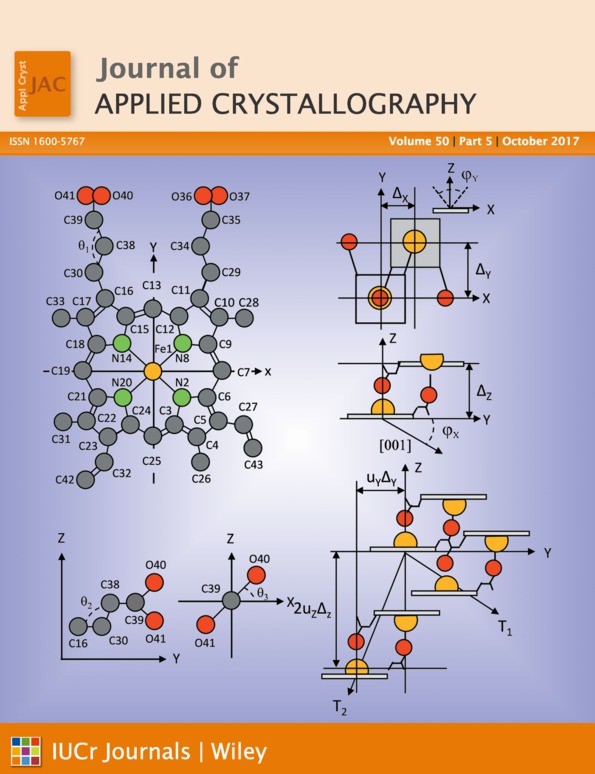Applications of dynamical theory of X-ray diffraction by perfect crystals to reciprocal space mapping
Abstract
The classical dynamical theory of X-ray diffraction is expanded to the special case of transversely restricted wavefronts of the incident and reflected waves. This approach allows one to simulate the two-dimensional coherently scattered intensity distribution centred around a particular reciprocal lattice vector in the so-called triple-crystal diffraction scheme. The effect of the diffractometer's instrumental function on X-ray diffraction data was studied.




